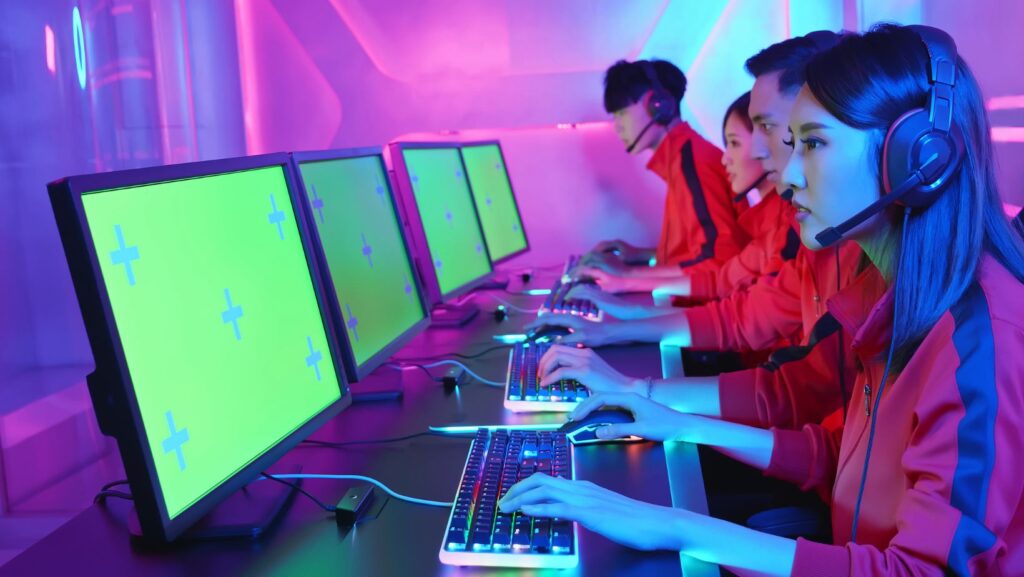I n the digital age, virtual dance competitions have revolutionized the way dancers showcase their talent and creativity. With the world shifting towards online platforms, dancers now have the opportunity to participate in competitions from the comfort of their homes. These virtual events bring together dancers from diverse backgrounds, creating a global stage for artistic expression and friendly competition.
Participants in virtual dance competitions can connect with fellow dancers worldwide, learn new styles, and receive feedback from esteemed judges, all without the constraints of geographical boundaries. The virtual format not only promotes inclusivity but also allows dancers to push their boundaries and explore innovative choreography. As technology continues to shape the dance industry, virtual competitions offer a unique avenue for dancers to shine and inspire audiences across the globe.
Virtual Dance Competitions
 Virtual dance competitions have revolutionized the dance industry, offering dancers a novel platform to showcase their skills globally. These online competitions enable participants to engage from any location, connect with dancers worldwide, and explore diverse dance styles without limitations, fostering a more inclusive dancing community where creativity knows no bounds.
Virtual dance competitions have revolutionized the dance industry, offering dancers a novel platform to showcase their skills globally. These online competitions enable participants to engage from any location, connect with dancers worldwide, and explore diverse dance styles without limitations, fostering a more inclusive dancing community where creativity knows no bounds.
Through virtual competitions, dancers receive valuable feedback from esteemed judges, push their artistic boundaries, and present innovative choreography that captivates audiences across the globe. As technology continues to shape the dance landscape, virtual competitions provide a unique avenue for dancers to inspire and shine on a global stage.
Benefits of Participating in Virtual Dance Competitions
 Virtual dance competitions offer numerous advantages to dancers, enhancing their experience and exposure in the dance world.Dancers can participate in virtual dance competitions from the comfort of their own homes, eliminating the need to travel to specific venues.
Virtual dance competitions offer numerous advantages to dancers, enhancing their experience and exposure in the dance world.Dancers can participate in virtual dance competitions from the comfort of their own homes, eliminating the need to travel to specific venues.
This flexibility allows dancers to showcase their talent without being limited by geographical boundaries or strict schedules. They can perform routines at a time that suits them best, making it convenient for dancers with busy schedules to still participate and compete effectively.
Virtual dance competitions provide dancers with the opportunity to reach a wider audience compared to traditional in-person events. By live streaming performances or submitting recorded routines online, dancers can showcase their skills to a global audience, expanding their reach beyond local or regional boundaries. This increased accessibility not only allows for greater exposure but also enables dancers to connect with an international community of dancers, fostering collaboration and cultural exchange.
Challenges Faced in Virtual Dance Competitions
 Virtual dance competitions, while offering numerous advantages, come with their own set of challenges that participants need to navigate. These challenges can impact various aspects of the competition experience and require dancers to adapt and overcome hurdles to achieve success in the virtual realm.
Virtual dance competitions, while offering numerous advantages, come with their own set of challenges that participants need to navigate. These challenges can impact various aspects of the competition experience and require dancers to adapt and overcome hurdles to achieve success in the virtual realm.
- Technical Issues:
- Ensuring a stable internet connection and suitable technology setup are crucial for a smooth competition experience. Technical glitches, audio/video lag, or sudden disconnections can disrupt a dancer’s performance and affect their scores.
- Limited Interaction:
- The lack of physical presence and face-to-face interaction in virtual competitions can make it challenging for dancers to establish connections with judges, fellow competitors, and the audience. Building rapport and conveying emotions solely through a screen can be daunting.
- Adapting Choreography for Virtual Settings:
- Choreographing a dance routine specifically for virtual platforms requires a different approach than performances on a physical stage. Dancers must consider camera angles, background settings, and spatial restrictions to enhance their presentation virtually.
- Judging Criteria Interpretation:
- Understanding and aligning with the judging criteria of virtual competitions can be complex. Dancers need to grasp how technical skills, artistic expression, and presentation are evaluated in an online format to tailor their performances effectively.
- Time Zone Challenges:
- Participants from different regions may face disparities in time zones, affecting live-streamed events and competition schedules. Managing rehearsals, performance times, and feedback sessions across various time zones can pose logistical challenges for dancers.
Ensuring success in virtual dance competitions demands strategic preparation and execution. Dancers must navigate unique challenges posed by the online format to stand out amidst global competition:



